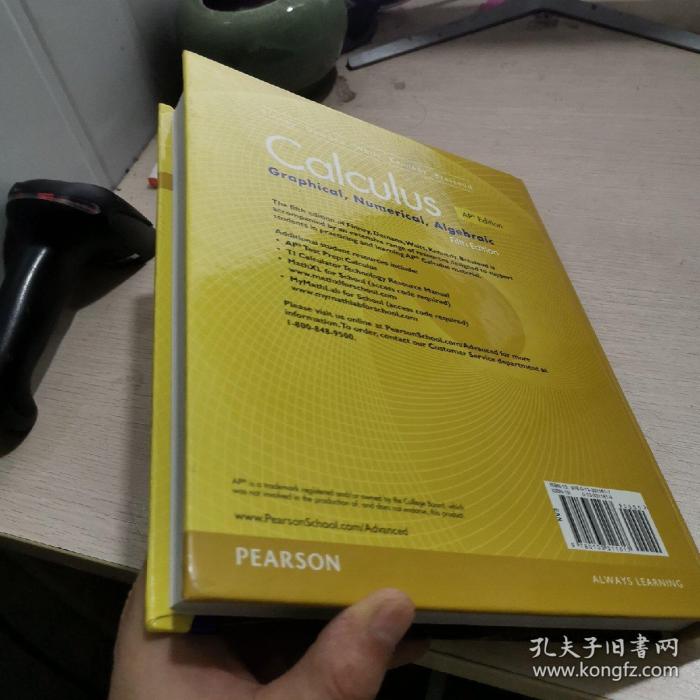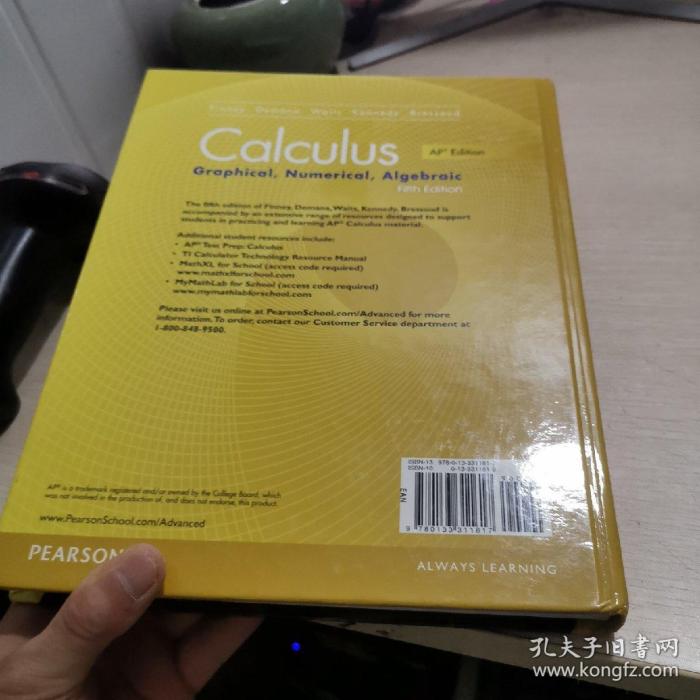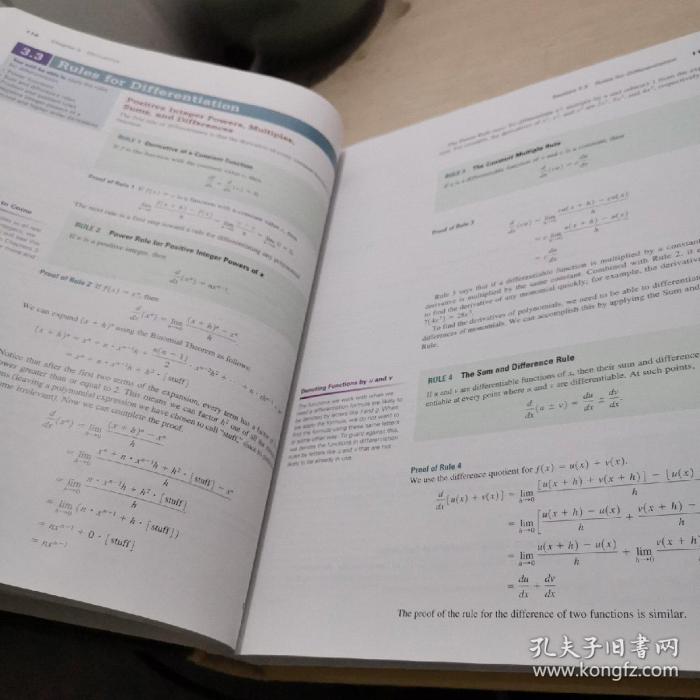Calculus Finney Demana Waits Kennedy stands as a preeminent textbook in the field of calculus, offering a comprehensive and engaging approach to this fundamental mathematical discipline. Its unique pedagogical features, coupled with a deep exploration of historical and practical applications, make it an indispensable resource for students and educators alike.
This textbook not only provides a thorough grounding in the theoretical foundations of calculus but also delves into its practical applications, showcasing its indispensable role in various fields such as physics, engineering, and economics. Moreover, the integration of technology enhances student engagement and understanding, making calculus more accessible and relatable.
1. Calculus by Finney, Demana, Waits, and Kennedy

Calculus by Finney, Demana, Waits, and Kennedy is a comprehensive textbook that provides a thorough introduction to the fundamental concepts of calculus. The textbook’s unique approach emphasizes conceptual understanding, problem-solving skills, and the use of technology to enhance student learning.
Key Features:
- Clear and concise explanations of concepts
- Numerous worked examples and practice exercises
- Interactive simulations and graphing calculators
- Emphasis on real-world applications
- Comprehensive coverage of topics, including limits, derivatives, integrals, and differential equations
Content Overview:
The textbook covers a wide range of topics in calculus, including:
- Limits and continuity
- Derivatives and their applications
- Integrals and their applications
- Differential equations
- Infinite series
Strengths and Weaknesses:
Strengths:
- Clear and engaging writing style
- Abundant practice exercises and worked examples
- Strong emphasis on conceptual understanding
- Integration of technology to enhance learning
Weaknesses:
- Some topics may be covered in too much detail
- The exercises can sometimes be repetitive
- The textbook may be too bulky for some students
2. Applications of Calculus: Calculus Finney Demana Waits Kennedy
Calculus is a powerful tool that has numerous applications in various fields, including physics, engineering, economics, and biology. Here are some real-world examples of how calculus is used:
Physics:
- Calculating the trajectory of a projectile
- Determining the acceleration of an object
- Modeling the motion of fluids
Engineering:
- Designing bridges and buildings
- Optimizing the flow of fluids in pipes
- Analyzing the stability of structures
Economics:, Calculus finney demana waits kennedy
- Predicting the growth of the economy
- Optimizing the production of goods and services
- Analyzing the behavior of financial markets
Biology:
- Modeling the growth of populations
- Analyzing the spread of diseases
- Optimizing the dosage of drugs
Importance of Calculus:
Calculus plays a crucial role in advancing scientific and technological advancements by providing a mathematical framework for understanding and solving complex problems. It enables scientists and engineers to model and analyze real-world phenomena, leading to innovations and discoveries that benefit society.
3. Pedagogical Features of the Textbook

The textbook incorporates a range of pedagogical features to enhance student engagement and understanding of calculus concepts.
Worked Examples:
The textbook provides numerous worked examples that illustrate the step-by-step process of solving calculus problems. These examples help students develop their problem-solving skills and reinforce the concepts being taught.
Practice Exercises:
Each chapter includes a variety of practice exercises that allow students to test their understanding of the material. The exercises range from basic to challenging, providing opportunities for students to practice and master the concepts.
Interactive Simulations:
The textbook includes interactive simulations that allow students to visualize calculus concepts and explore mathematical relationships. These simulations help students develop a deeper understanding of the material and make learning more engaging.
Contribution to Learning:
These pedagogical features contribute to student engagement and understanding of calculus concepts by:
- Providing clear and concise explanations
- Reinforcing concepts through worked examples
- Enhancing problem-solving skills through practice exercises
- Making learning more interactive and engaging through simulations
4. Historical Context of Calculus
Calculus has a rich history that dates back to the ancient Greeks. However, it was not until the 17th century that calculus was formally developed by Isaac Newton and Gottfried Leibniz.
Key Figures:
- Isaac Newton: Developed the concept of fluxions, which is an early form of calculus.
- Gottfried Leibniz: Independently developed calculus and introduced the notation that is still used today.
Impact on Mathematics and Science:
The development of calculus had a profound impact on mathematics and science. It provided a new way to understand and solve problems involving motion, change, and infinity. Calculus has been used to make significant advancements in fields such as physics, engineering, and economics.
Historical Context in the Textbook:
The textbook provides a brief overview of the historical development of calculus, including the contributions of Newton and Leibniz. This historical context helps students appreciate the evolution of calculus and its importance in the development of mathematics and science.
5. Integration of Technology

The textbook integrates technology to enhance student learning in several ways.
Interactive Simulations:
The textbook includes interactive simulations that allow students to visualize calculus concepts and explore mathematical relationships. These simulations are available online and can be used to supplement the material in the textbook.
Graphing Calculators:
The textbook provides instructions on how to use graphing calculators to solve calculus problems. Graphing calculators can be used to graph functions, find derivatives and integrals, and solve equations.
Online Resources:
The textbook’s website provides access to additional online resources, such as practice exercises, videos, and tutorials. These resources can help students reinforce their understanding of the material and prepare for exams.
Benefits and Limitations:
Benefits:
- Enhances visualization of calculus concepts
- Provides tools for solving complex problems
- Makes learning more interactive and engaging
Limitations:
- Can be distracting if not used appropriately
- May not be accessible to all students
- Can lead to over-reliance on technology
FAQ Corner
What sets Calculus Finney Demana Waits Kennedy apart from other calculus textbooks?
Calculus Finney Demana Waits Kennedy distinguishes itself through its unique pedagogical approach, which includes worked examples, practice exercises, and interactive simulations. These features enhance student engagement and understanding of calculus concepts.
How does Calculus Finney Demana Waits Kennedy approach the teaching of calculus?
Calculus Finney Demana Waits Kennedy adopts a comprehensive approach that covers both the theoretical foundations of calculus and its practical applications. This approach provides students with a well-rounded understanding of the subject.
What are the strengths of Calculus Finney Demana Waits Kennedy?
The strengths of Calculus Finney Demana Waits Kennedy lie in its clear and concise explanations, its wide range of examples and exercises, and its emphasis on real-world applications. Additionally, the textbook’s integration of technology enhances student learning.